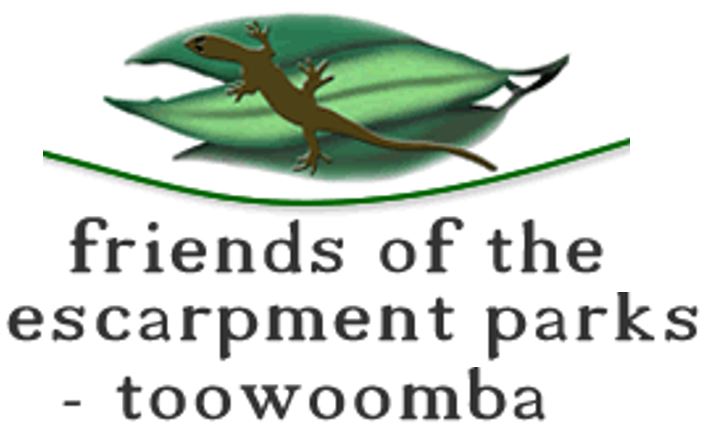Project: Toowoomba Escarpment Parks Project
Subject: research, conservation
Location: Toowoomba, southern Queensland
Traditional lands of the Giabal people.
Since 2020 A Rocha Australia has partnered with the Friends of the Escarpment Parks (FEP), supporting efforts to control weeds and monitor wildlife at three bushland parks managed by Toowoomba Regional Council, as shown on the map on the right.
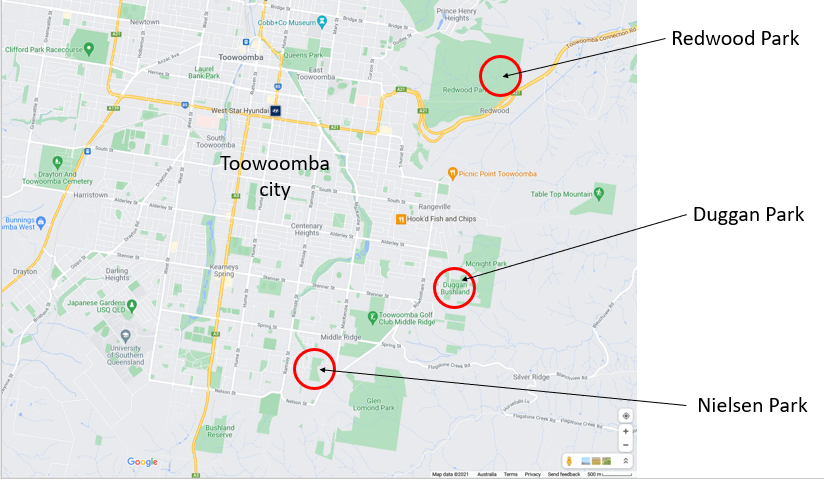
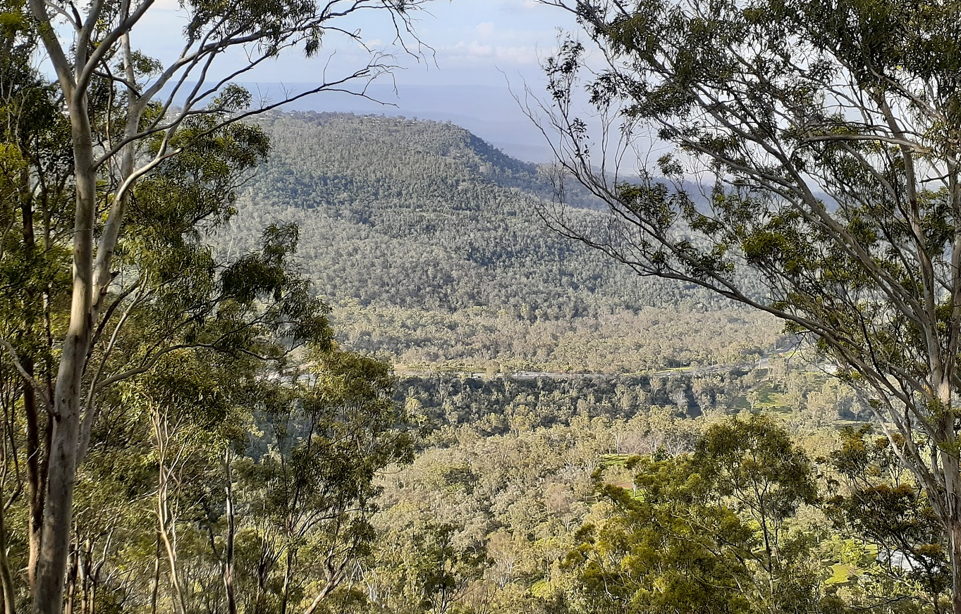
Nielsen Park is a five-hectare remnant of Blackbutt Eucalyptus pilularis-dominated open forest mapped as an endangered regional ecosystem.
Key outcomes so far:
- Controlling invasive plants including Lantana and Asparagus Fern, allowing indigenous understorey species to establish
- Standardised bird surveys (BirdLife Australia 2.0 ha 20 min method), monthly for two years followed by more intensive quarterly surveys
- Remote camera monitoring
Results show an over-abundance of aggressive bird species, typical of the urban location, and few small bush birds – in part also due to the park’s isolation and poor connectivity to other forest areas. Painted Buttonquail Turnix varius were discovered in the park and other small birds have returned, including two breeding pairs of Eastern Whipbirds Psophodes olivaceus, bowerbirds and visiting owls and frogmouths.
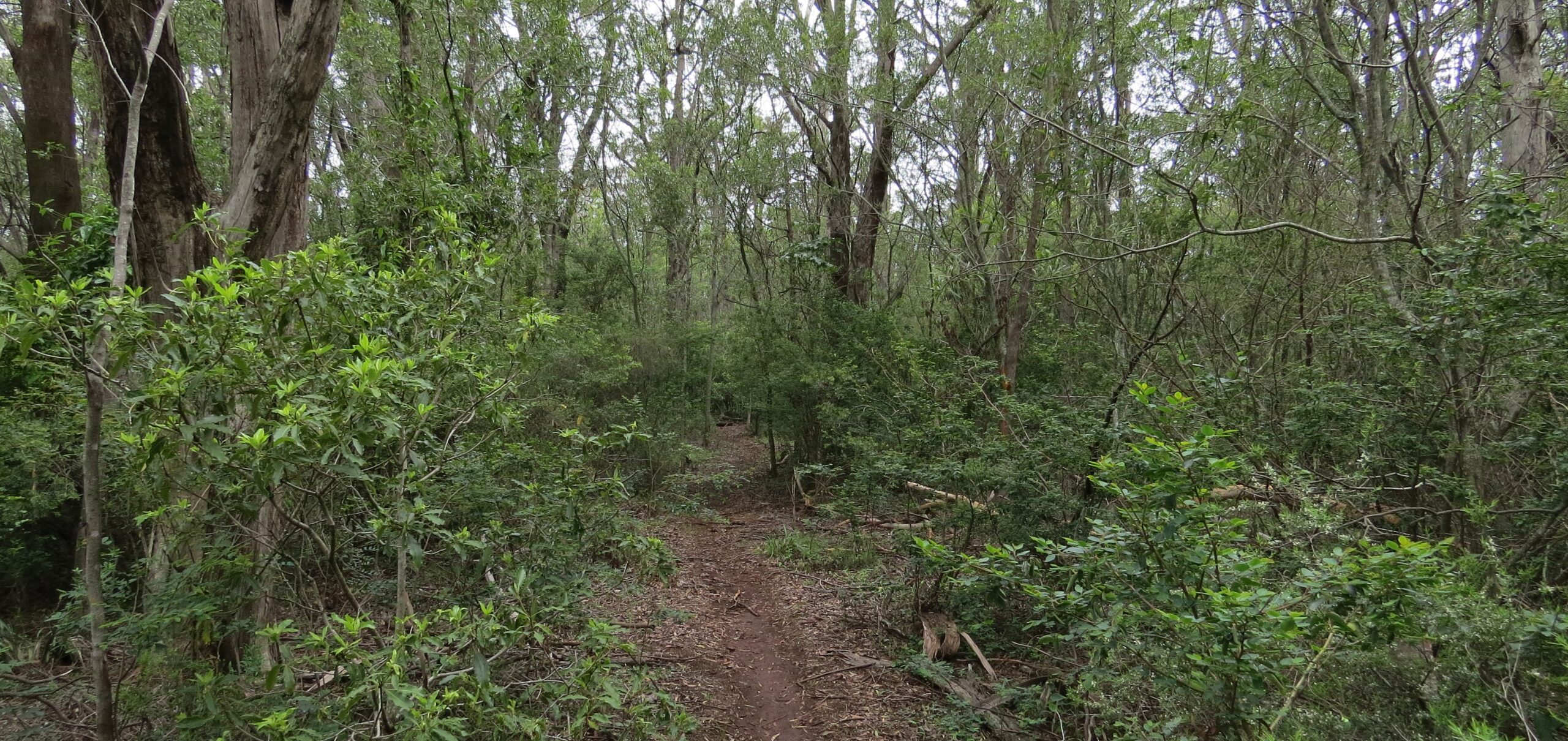
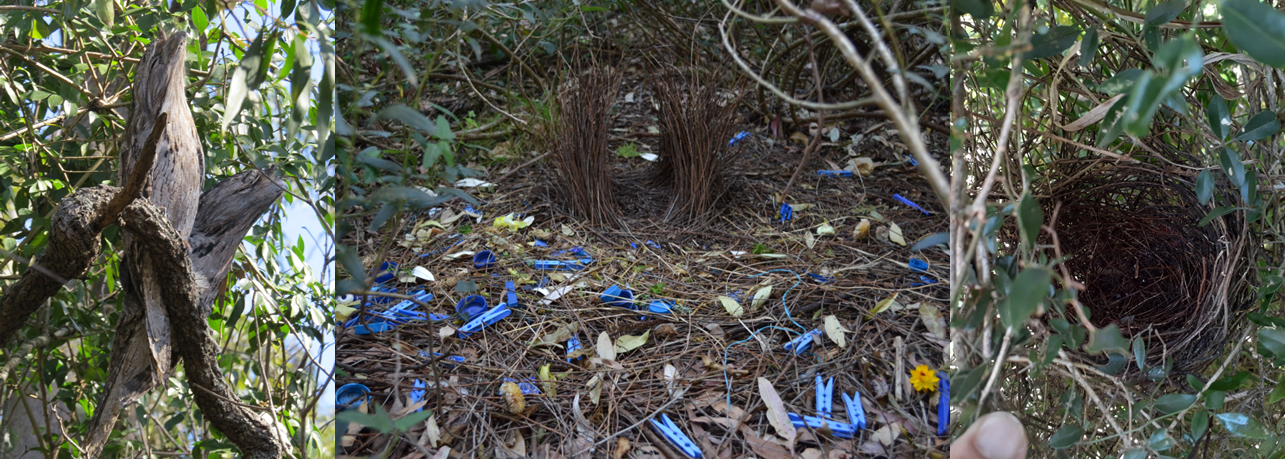
Redwood Park is a much larger council reserve on Toowoomba’s eastern escarpment. Cat’s Claw Creeper Dolichandra unguis-cati is one of several invasive plants that have smothered trees and shrubs in semi-evergreen vine thicket (‘softwood scrub’ or ‘dry rainforest’), an endangered ecosystem. It is home to several threatened species at risk of habitat loss, including Black-breasted Buttonquail and Powerful Owl Ninox strenua as well as fruit bats and orchids.
Key outcomes so far:
- Slow and labour-intensive removal of Cat’s Claw Creeper, freeing native vegetation
- Remote camera monitoring in treated areas
Results show confirmed breeding by the Buttonquail and presence of wallabies, possums, Monitor Lizards and a suite of various birds.

These videos show Black-breasted Buttonquail using a pivot-and-turn feeding method that leaves plate-shaped scrapes in the leaf litter on the scrub floor.
Duggan Park contains near-continuous woodland and forest on the city’s eastern edge. Toowoomba Regional Council has invested substantially in making this popular park accessible to people with disabilities. A Rocha Australia started working in this park more recently.
Key outcomes so far:
- Controlling invasive plants including Lantana and Asparagus Fern, allowing indigenous understorey species to establish
- Standardised bird surveys (BirdLife Australia 2 ha, 20 min method) monthly
- Remote camera monitoring
Results show a diversity of bird species (57) due to better woodland connectivity. After a series of high rainfall years, breeding Painted Buttonquail were seen; other ground-feeding species included Wonga Pigeon Leucosarcia melanoleuca and Brown-capped Emerald Dove Chalcophaps longirostris.
Duggan Park bird survey report – 2021 and 2022
A Rocha Australia hopes that involvement in these community projects will encourage greater engagement of Toowoomba churches in creation care.
